Bezos offers billions in incentives for NASA lunar lander contract
Monday, 26 July 2021 12:19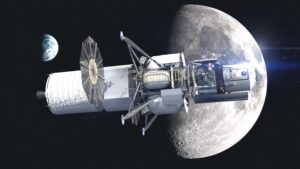
WASHINGTON — Blue Origin founder Jeff Bezos says his company will cover more than $2 billion in costs if NASA will award it a second Human Landing System (HLS) contract.
In a July 26 letter to NASA Administrator Bill Nelson, Bezos said the company would waive up to $2 billion in payments in the first years of a new award, as well as pay for a demonstration mission, should NASA give the company an HLS award like the one SpaceX received in April to develop and demonstrate a crewed lunar lander.
Tech Breakthrough Morphs Gigabit WiFi into Terabit Satellite Internet
Monday, 26 July 2021 11:37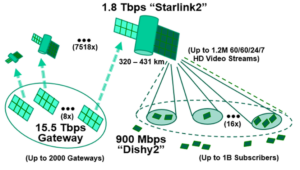
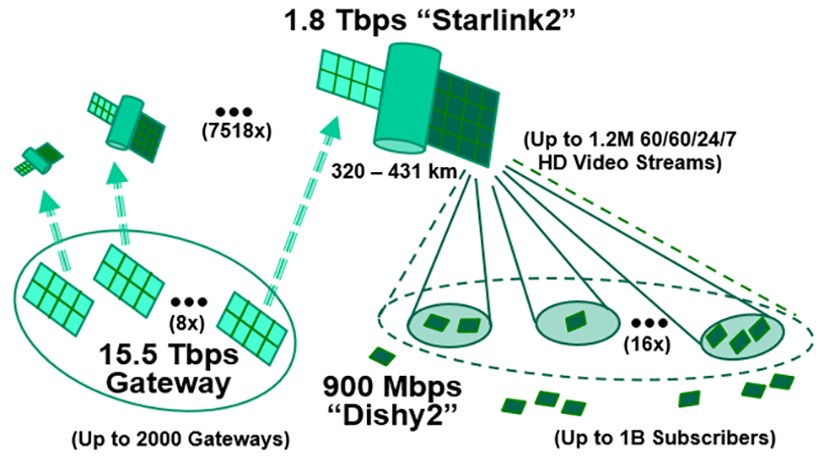
A highly unlikely, radically innovative synthesis of millimeter wave antenna design, digital communications coding, new-school terrestrial radio multi-signal processing and old-school satellite directional transmission could be delivering High Definition Internet from way-on-high to billions by 2026.
China is working on a relay satellite to support lunar polar missions
Monday, 26 July 2021 11:04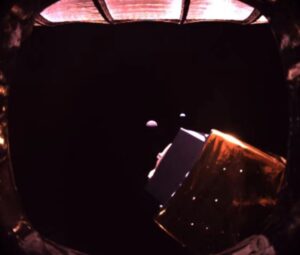
HELSINKI — China is developing a new lunar relay satellite to support future exploration missions to the south pole of the moon.
Op-ed | The Success of Artemis Hinges on NASA’s Commitment to Competition
Monday, 26 July 2021 11:00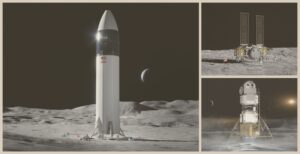
The United States is about to take its next giant leap into space – the return of U.S. astronauts to the moon by 2024, this time to stay.
Report calls on government agencies to better coordinate spectrum
Monday, 26 July 2021 10:19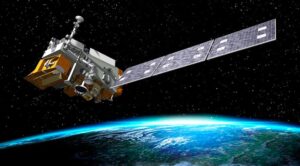
WASHINGTON — An interagency dispute about the use of a spectrum band for weather forecasting versus terrestrial wireless services illustrates the need for the federal government to reform its spectrum management processes, a report concluded.
Reprogrammable satellite is ready for launch
Monday, 26 July 2021 07:33
A European telecommunications satellite that can be completely repurposed while in orbit has been placed on board a rocket ready for launch on 30 July.
Google parent launches new 'moonshot' for robotics software
Monday, 26 July 2021 04:14 Google's parent Alphabet unveiled a new "moonshot" project to develop software for robotics which could be used in a wide range of industries.
The new unit, dubbed Intrinsic, will "become an independent Alphabet company," and seek industrial partners to advance their work helping to make everything from solar panels to cars, the new unit's chief, Wendy Tan-White, said in a blog post.
"In
Google's parent Alphabet unveiled a new "moonshot" project to develop software for robotics which could be used in a wide range of industries.
The new unit, dubbed Intrinsic, will "become an independent Alphabet company," and seek industrial partners to advance their work helping to make everything from solar panels to cars, the new unit's chief, Wendy Tan-White, said in a blog post.
"In The Red Planet has a larger core and a thinner crust
Sunday, 25 July 2021 11:12 Mars' surface is known in great detail through exploration using orbiting spacecraft. But until now its interior structure could only be derived indirectly or simulated using computational models. With the participation of the German Aerospace Center (Deutsches Zentrum fur Luft- und Raumfahrt; DLR), NASA's InSight mission has provided surprising new discoveries.
The core of our planetary n
Mars' surface is known in great detail through exploration using orbiting spacecraft. But until now its interior structure could only be derived indirectly or simulated using computational models. With the participation of the German Aerospace Center (Deutsches Zentrum fur Luft- und Raumfahrt; DLR), NASA's InSight mission has provided surprising new discoveries.
The core of our planetary n Better understanding of Earth's atmospheric chemistry from studying Mars?
Sunday, 25 July 2021 11:12 Long-term studies of ozone and water vapour in the atmosphere of Mars could lead to better understanding of atmospheric chemistry for the Earth. A new analysis of data from ESA's Mars Express mission has revealed that our knowledge of the way these atmospheric gases interact with each other is incomplete.
Using four martian years of observations from the SPICAM (Spectroscopy for the Invest
Long-term studies of ozone and water vapour in the atmosphere of Mars could lead to better understanding of atmospheric chemistry for the Earth. A new analysis of data from ESA's Mars Express mission has revealed that our knowledge of the way these atmospheric gases interact with each other is incomplete.
Using four martian years of observations from the SPICAM (Spectroscopy for the Invest Insight data offers clues to Mars' deep interior, formation in solar system
Sunday, 25 July 2021 11:12 Marsquake data collected by NASA's InSight lander has allowed planetary scientists to more accurately characterize Mars' deep interior, as well as offered clues to the Red Planet's origins.
"Insight has confirmed that our view that Mars is a planet that was once almost entirely molten and separated into a crust, mantle and core as it cooled," Amir Khan of ETH Zurich said Friday during a
Marsquake data collected by NASA's InSight lander has allowed planetary scientists to more accurately characterize Mars' deep interior, as well as offered clues to the Red Planet's origins.
"Insight has confirmed that our view that Mars is a planet that was once almost entirely molten and separated into a crust, mantle and core as it cooled," Amir Khan of ETH Zurich said Friday during a China's Mars rover travels 585 meters on red planet
Sunday, 25 July 2021 11:12 China's Mars rover Zhurong has traveled 585 meters on the surface of the red planet as of Friday, according to the Lunar Exploration and Space Program Center of the China National Space Administration.
On Friday, the Mars orbiter marked its first anniversary of operation. Now it is about 378 million km away from Earth. The delay of its one-way communication was around 21 minutes, said the
China's Mars rover Zhurong has traveled 585 meters on the surface of the red planet as of Friday, according to the Lunar Exploration and Space Program Center of the China National Space Administration.
On Friday, the Mars orbiter marked its first anniversary of operation. Now it is about 378 million km away from Earth. The delay of its one-way communication was around 21 minutes, said the The anatomy of a planet
Sunday, 25 July 2021 11:12 Since early 2019, researchers have been recording and analysing marsquakes as part of the InSight mission. This relies on a seismometer whose data acquisition and control electronics were developed at ETH Zurich. Using this data, the researchers have now measured the red planet's crust, mantle and core - data that will help determine the formation and evolution of Mars and, by extension, the ent
Since early 2019, researchers have been recording and analysing marsquakes as part of the InSight mission. This relies on a seismometer whose data acquisition and control electronics were developed at ETH Zurich. Using this data, the researchers have now measured the red planet's crust, mantle and core - data that will help determine the formation and evolution of Mars and, by extension, the ent NASA Awards Launch Services Contract for the Europa Clipper Mission
Sunday, 25 July 2021 11:12 NASA has selected Space Exploration Technologies Corp. (SpaceX) of Hawthorne, California, to provide launch services for Earth's first mission to conduct detailed investigations of Jupiter's moon Europa.
The Europa Clipper mission will launch in October 2024 on a Falcon Heavy rocket from Launch Complex 39A at NASA's Kennedy Space Center in Florida. The total contract award amount for launc
NASA has selected Space Exploration Technologies Corp. (SpaceX) of Hawthorne, California, to provide launch services for Earth's first mission to conduct detailed investigations of Jupiter's moon Europa.
The Europa Clipper mission will launch in October 2024 on a Falcon Heavy rocket from Launch Complex 39A at NASA's Kennedy Space Center in Florida. The total contract award amount for launc Antimatter from laser pincers
Sunday, 25 July 2021 11:12 In the depths of space, there are celestial bodies where extreme conditions prevail: Rapidly rotating neutron stars generate super-strong magnetic fields. And black holes, with their enormous gravitational pull, can cause huge, energetic jets of matter to shoot out into space. An international physics team with the participation of the Helmholtz-Zentrum Dresden-Rossendorf (HZDR) has now proposed
In the depths of space, there are celestial bodies where extreme conditions prevail: Rapidly rotating neutron stars generate super-strong magnetic fields. And black holes, with their enormous gravitational pull, can cause huge, energetic jets of matter to shoot out into space. An international physics team with the participation of the Helmholtz-Zentrum Dresden-Rossendorf (HZDR) has now proposed Hubble views a faraway galaxy through a cosmic lens
Sunday, 25 July 2021 11:12 The center of this image from the NASA/ESA Hubble Space Telescope is framed by the tell-tale arcs that result from strong gravitational lensing, a striking astronomical phenomenon which can warp, magnify, or even duplicate the appearance of distant galaxies.
Gravitational lensing occurs when light from a distant galaxy is subtly distorted by the gravitational pull of an intervening astrono
The center of this image from the NASA/ESA Hubble Space Telescope is framed by the tell-tale arcs that result from strong gravitational lensing, a striking astronomical phenomenon which can warp, magnify, or even duplicate the appearance of distant galaxies.
Gravitational lensing occurs when light from a distant galaxy is subtly distorted by the gravitational pull of an intervening astrono 